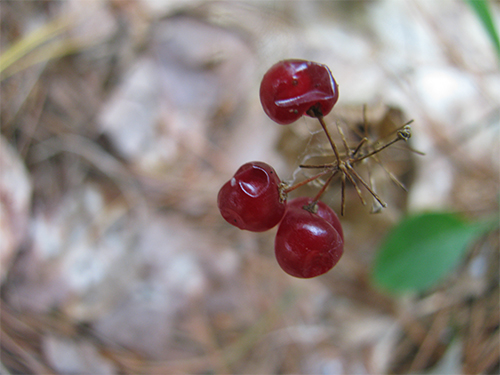Phenology Reflections: Focus on Canada Mayflower
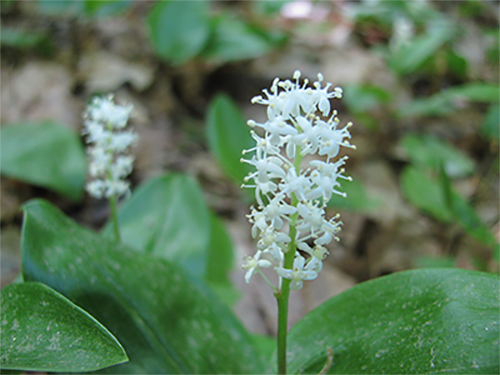
Article by Diane De Luca
Photo: Canada Mayflower full flower. Photo by Diane De Luca.
Canada Mayflower (Maianthemum canadense), also known as Wild Lily-of-the-valley, grows in large patches in cool shady deciduous or coniferous woodlands. Patches of this species may be one clone, connected via roots. Old clones can reach 30-60 years of age. Its leaves are some of the earliest to appear in the spring, abundant across the forest floor and tightly coiled when they first emerge. Tiny white flowers are clustered at the top of the stem. The fruit are speckled green berries that eventually turn red and are attractive to birds and small mammals.
Although long term data is needed to better understand the causes and impacts of climate change on our ecosystem, it is clear from shorter term collection of data that each species responds to change in a unique way. Since 2012, I have recorded the dates of first emergence of multiple perennial wildflowers. First emergence is when the new growth is visible above the ground as detailed in the photos. The dates have been remarkably consistent for most of the wildflowers, including Canada Mayflower, ranging from April 15 to April 23, except in 2018 and 2020. I have attributed the consistency to ground temperature.
Emergence of Canada Mayflower in 2018 was notable for a late date of May 7 when a very cold spring with late snows delayed many spring happenings. This year revealed another interesting pattern. Very warm temperatures in late March coupled with a mild winter allowed many plants to get an early start. First emergence was observed on March 27, fully 19 days earlier than any other recorded observation. Just as notable, however, was that bloom dates ended up being similar to past years. After the warm temperatures in late March, April and May had below normal temperatures with significant snows in both months. The first emergents survived, but stalled in any further growth until the conditions improved.
I encourage you to make a long term commitment to documenting the stories in your own backyards. These stories will contribute to better understanding the impacts of change.
Grateful thanks to an anonymous donor for supporting the New Hampshire Audubon Phenology Project.
Photos by Diane De Luca.
Canada Mayflower first emergent
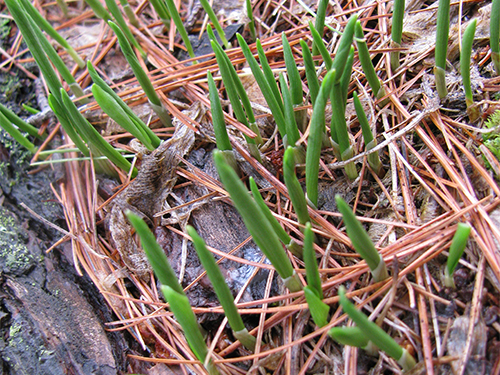
Canada Mayflower blankets the ground
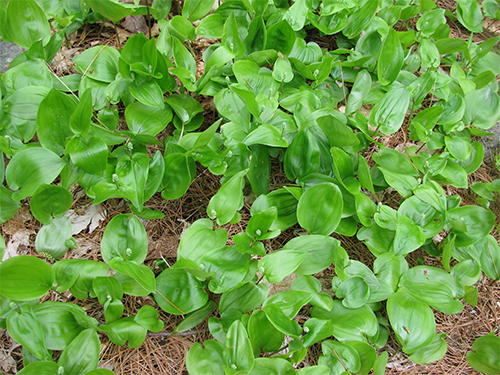
Canada Mayflower resilience in May snow
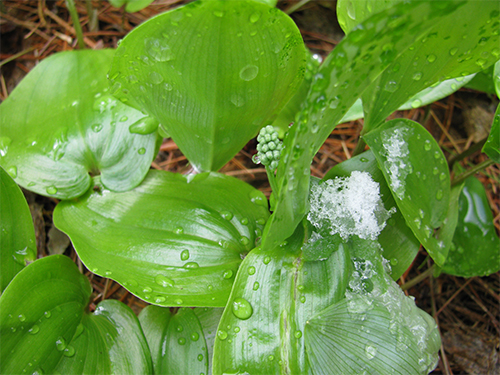
Canada Mayflower flowers opening
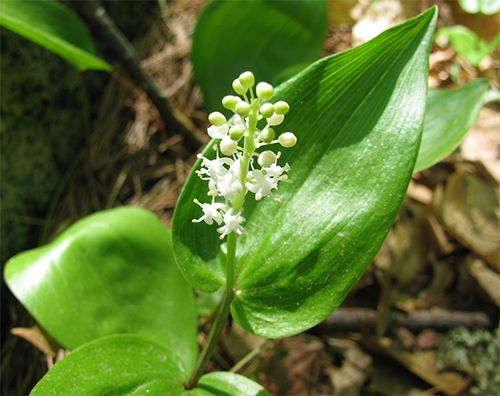
Canada Mayflower multiple speckled fruits
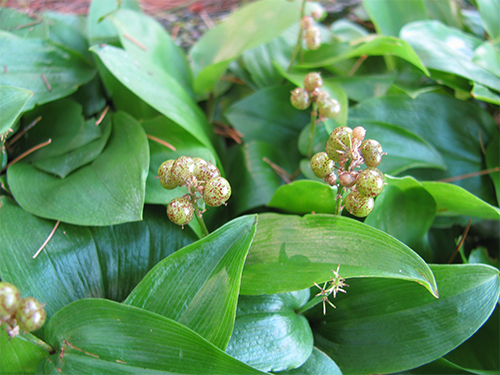
Canada Mayflower red fall fruits
